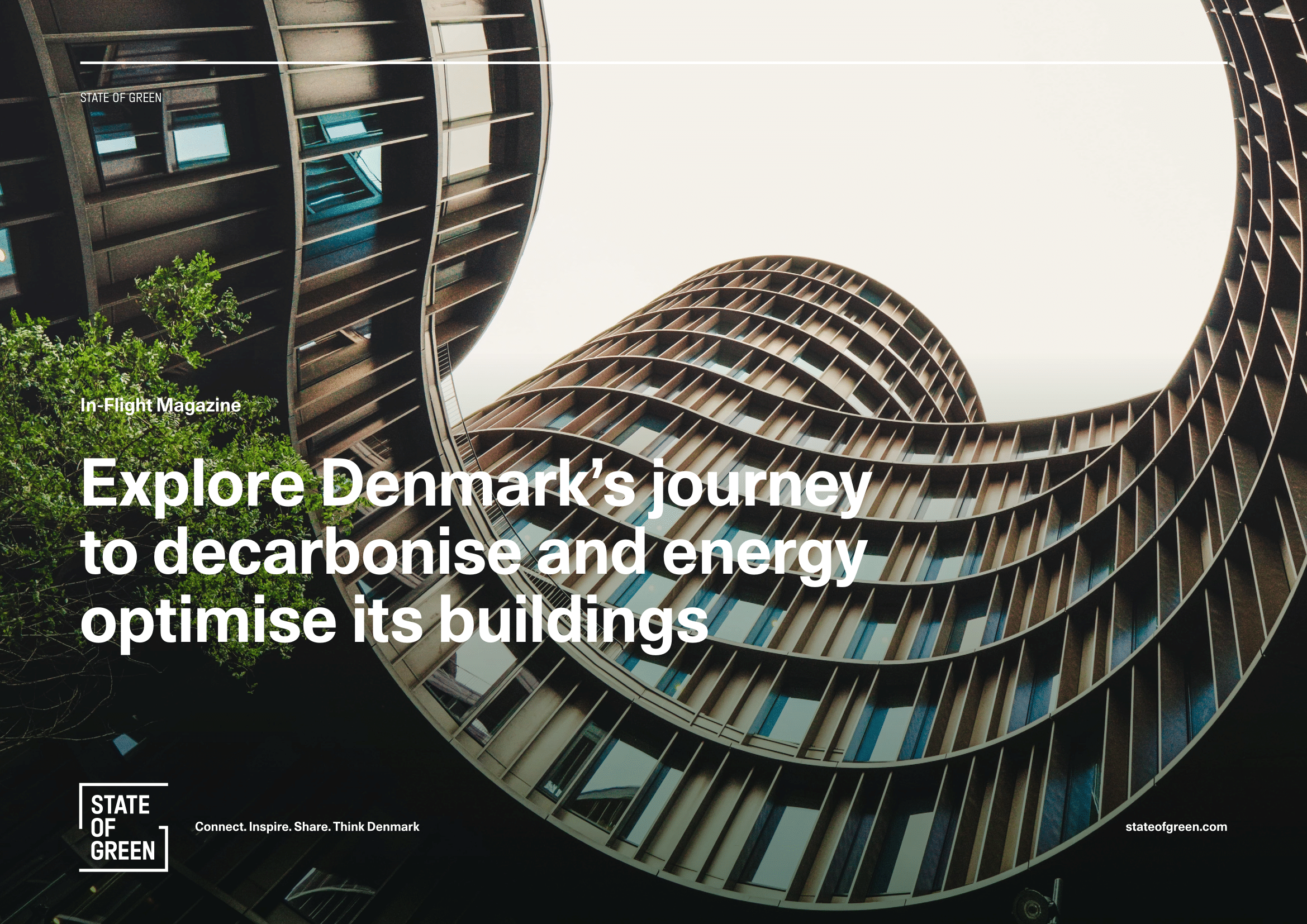Explore Denmark’s journey to decarbonise and energy optimise its buildings
Explore our inflight magazine to find more inspiration and solutions to accelerate energy efficiency in buildings.
Discover the magazine
To reach the goal of a fossil-free society by 2050, it is important to decarbonise the buildings we live in. By switching to electric heat pumps or district heating, renovating instead of demolishing, and creating green buildings we can significantly lower their CO2e emissions.

Explore our inflight magazine to find more inspiration and solutions to accelerate energy efficiency in buildings.
Discover the magazineBuildings are the spatial foundation of our daily lives. They are our homes, workspaces, schools, hospitals and serve many other human needs and purposes. But buildings are also one of the largest global consumers of energy. They account for a staggering 40% of global energy consumption and are responsible for about 30% of global CO2 emissions. As such, it is imperative that we make both the existing building stock and future buildings energy-efficient. And if we do it right, the green transformation of the built environment can bring about a kind of sustainability that fundamentally improves the well-being of us all.
Approximately 85% of the structures, we anticipate inhabiting by 2050, have already been constructed. Nevertheless, fluctuating energy prices coupled with underperforming buildings are pushing energy poverty on a global scale. Addressing the energy usage of buildings stands as a key priority for countries and communities striving to reduce their CO2 emissions. Establishing energy efficiency as the foundational norm for construction and renovation is crucial, as lower energy demands translate into lower energy generation.
In Denmark, both construction and utilization of buildings contribute to roughly 40% of the total energy usage and 30% of the country’s CO2 emissions. Despite the efforts that lie ahead, Denmark’s experiences demonstrate that prioritising energy renovation is among the simplest and most economically beneficial avenues to address the challenge of decoupling resource consumption growth from economic expansion.
Bound by legislation, Denmark is committed to curbing greenhouse gas emissions by 70% before 2030, relative to the metrics of 1990. To reach these goals, Denmark has a long history of promoting energy efficiency in buildings through the implementation of public policies and regulations. Today, Denmark has one of the most comprehensive regulatory frameworks for ensuring energy efficiency in buildings, while world-class solutions and technologies for insulation, windows, and architecture from both the public and private sectors have made Denmark a frontrunner in the field.
Take a deep-dive on energy efficiency in the building stock, by listening to experiences and insights from Danish experts on the field, such as The Danish Energy Agency, VELUX, and COWI.
Learn more about the episodesolutions
Energy efficiency in buildings
+1
solutions
Energy efficiency in buildings
+2
solutions
Energy efficiency in buildings

partners
Buildings
+2

partners
Buildings
+4
solutions
Energy efficiency in buildings
+2
events
Urban planning and development
+7